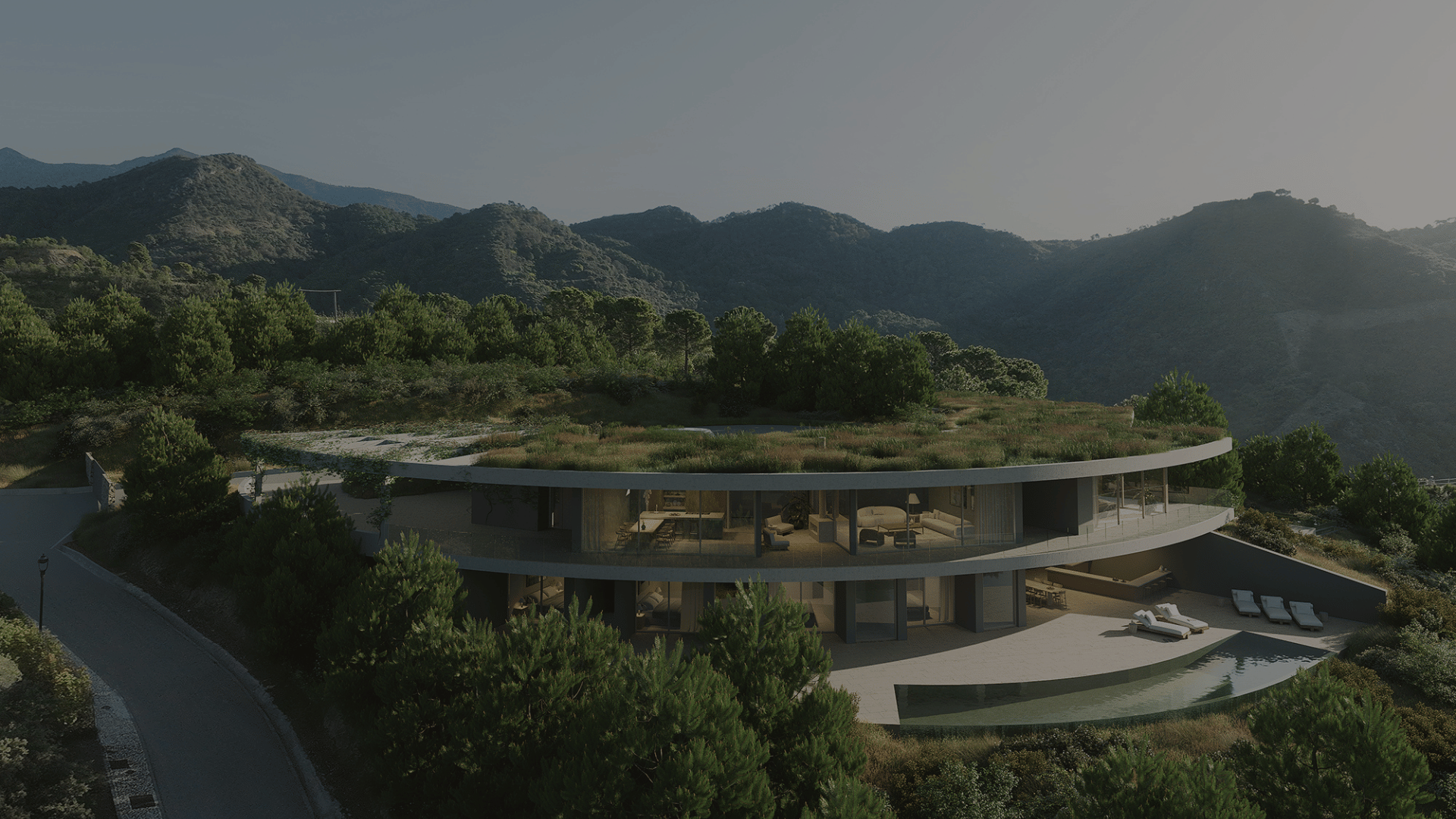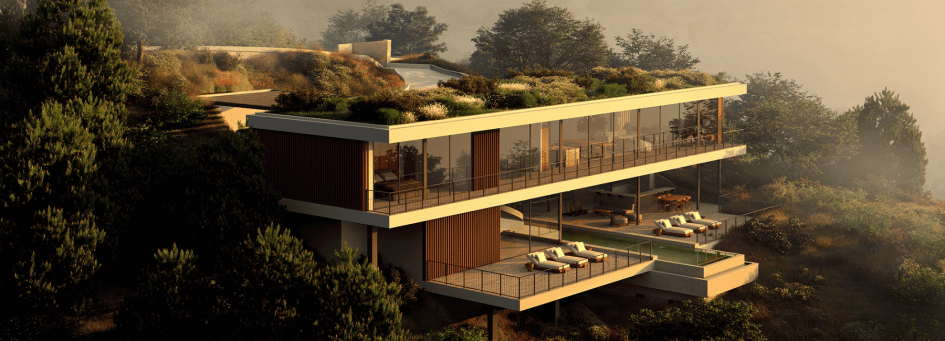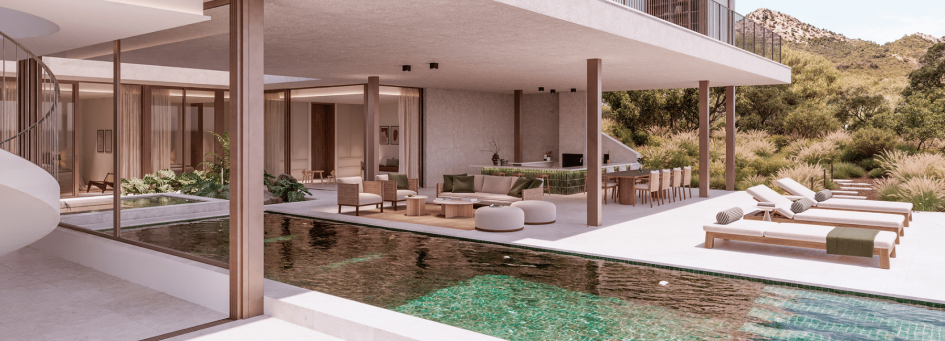
Trends 2025: Biophilic Design to Connect Life with Nature
· 3 min. read · by Carmen de Arriaga
The concept of luxury has evolved towards a deeper connection with nature. Beyond material wealth, quality of life now centres on the integration of natural elements in the home. Biophilic design, on the rise, focuses on spaces that blend interiors and exteriors, creating green oases that offer unique views and a serene atmosphere. Natural materials, earth tones, and wide views of the sea or mountains define these havens, where living in harmony with the environment becomes the new standard of well-being.
Connecting with Nature from Home
A key premise in this type of design is the connection between nature and the home: transforming your house into an oasis of nature that provides experiences similar to being in a natural setting, breathing in an environment perfectly integrated with nature.
Key Elements: Green Walls and Ceilings in Spacious Rooms
A biophilic home can be achieved by integrating several trends and materials. One of the key principles is the use of indoor gardens. This is accomplished by incorporating plants throughout the entire space, green ceilings and walls designed to house a large amount of vegetation. These elements improve the quality of the air you breathe, serve as excellent thermal insulation, reduce external noise, and contribute to sustainability by reducing the need for energy and heating.
Another essential feature is the expansiveness of the spaces, which aim to be transparent and confound the viewer’s perspective, creating the feeling that the home is an extension of the landscape..
The Importance of Textures and Materials in the biophilic design
The ultimate goal of biophilic design is to mimic nature, thus making natural materials central.
The comfort of your refuge is enhanced by the warming use of stones, wood in its most natural form, bamboo, wicker, … giving significant space to recycled materials, ecological paints and finishes.
The use of innovative materials like mycelium, made from fungi, or bio-bricks, created from organic materials such as algae, is also very appealing.
Similarly, the fabrics used will be in harmony with the created environment, with linen, cotton, wool, and jute being some of the most commonly used due to their biodegradable and non-polluting nature.
Water and Its Properties
Water elements are an essential part of a biophilic home. The use of fountains or indoor ponds will provide your home with a relaxed atmosphere thanks to the flow of water and its sounds. Additionally, integrating this element in a wall waterfall, for example, will provide a healing decorative feature.
The possibilities are numerous, including aquatic gardens with fish and aquatic plants, developed in ponds or water terrariums.
What Colours Should I Use for a biophilic desing?

As previously mentioned, sensory integration is highly relevant for biophilic design and, therefore, the colour palette used in our home should help blend it with the natural environment.
The main colours are:
- Earth Tones in all shades (from the lightest beige to the deepest brown), evoking sand, clay, wood, and certain stones.
- Green Tones: Emulating vegetation and plants, with special interest in Mediterranean green and olive shades.
- Blue Tones: Their various shades remind us of the sky and the sea, from lakes to rivers, ranging from warm to icy waters.
- Neutral and Gray Tones: To mimic the appearance of rocks, volcanic stones, etc.
- Seasonal Tones, such as autumnal reds or wintery whites.
If you wish any information about available properties with innovative design, feel free to contact us.
